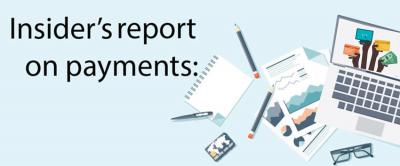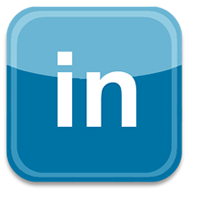The Green Sheet Online Edition
February 2, 2025 • 25:02:02
Insider's report on payments: The changing payments landscape

When I was in college, in the early 1970s, credit cards were hard to come by. Once graduated, the first thing most people my age did was obtain a store credit card. After you had one for a time and could prove you were a good credit risk, you could go for a regional credit card, or even Visa or Mastercard plastic.
That was then. This is now. Today, most college students carry credit and/or debit cards, and many of those are tied to instant payment networks, like Venmo or Zelle. Plastic is just so 20th century, at least for the younger generations.
I've reviewed several reports highlighting changes in consumer and merchant payment preferences. Gleaned insights follow.
McKinsey: A2A not a slam dunk in U.S.
Account-to-account payments, also known as pay-by-bank payments, face challenges in card-dominated markets like the United States, according to a recent McKinsey & Co. report authored by Andy Dresner, a partner in McKinsey's New York office, and Amit Gandhi, an associate partner in the firm's Atlanta office.
Some of the challenges are regulatory in nature. An underlying premise of A2A payments is open banking, which requires consumers to grant permission for a service provider to gain access to their banking credentials. In the United States, rules laying out the guardrails for open banking were put in place in October 2024 by the Consumer Financial Protection Bureau.
But in early February of this year, CFPB employees were told to stay home and put all their work projects on the back burner as part of a government cost-cutting move.
That's not the only reason A2A will have trouble gaining traction in the United States "Americans love their credit cards and the rewards that come with them, so dislodging the popularity of cards is perhaps the biggest challenge to U.S. adoption of A2A," Dresner and Gandhi wrote.
They estimated that A2A could handle about $200 billion in consumer-to-business transactions by 2026; potentially more in other types of payments. "The impact may be limited for daily transactions with a retailer or service provider but larger for big-ticket and recurring payments such as utility bills, insurance payments and more," they wrote.
Noting that merchants like the idea of bank-to-bank payments because pricing is well below interchange and A2A can significantly reduce fraud and chargebacks, the authors suggested consumers may want something in return for foregoing credit cards – something that compensates them for the loss of bank rewards points. Bottom line: cards will dominate payments, especially in the digital space, with A2A payments holding a small but growing share.
Paysafe: Age matters
Card payments remain the most common way for consumers to transact. Yet, responses are not cut and dried. Asked for a 2024 Paysafe survey which payment methods they used for the majority of payments, the top four vote getters were:
- 49 percent, debit cards
- 28 percent, credit cards
- 17 percent bank transfers
- 11 percent digital wallets
Not surprisingly preferences vary by generation. Older consumers are especially security conscious: 60 percent of those over the age of 60 who were queried for Paysafe's Inside the Wallet report said they select the payment method they consider most secure. On the other hand, 37 percent younger consumers polled said the speed with which a transaction can be completed matters most to them.
Payment method selection can vary based on what someone is purchasing. For example, when Paysafe asked respondents which payment methods they had used for gaming or gambling purchases, they were more apt to say digital wallets (16 percent) than when they were asked their generally preferred payment method (11 percent indicated digital wallets).
Paysafe's report also revealed ongoing changes in payment habits. Asked which payment method they were using more than they had the previous year (2023) debit cards showed a notable gain (a 53 percent increase); bank transfers showed an impressive gain (39 percent); credit cards gained, as well (33 percent increase); and digital wallets registered a gain at 32 percent.
One data point from the Paysafe report that should not escape notice is that 43 percent of consumers will abandon their online shopping cart if their preferred payment method isn't available. I can attest to this first hand.
MX Technologies: familiarity, rewards, hold clout
An August 2024 report from MX Technologies revealed that consumers are looking for security, convenience and rewards when it comes to choosing payment methods. But it also suggested that many consumers (78 percent) prefer to pay for things using the method they are most accustomed to.
The financial technology firm also reported that pay by bank is gaining in popularity, especially among younger consumers and when tied to rewards.
Almost half of Gen Z said they would add pay by bank as a payment option for online retailers they frequently shop. Among baby boomers, just 22 percent would provide access to their checking accounts for online purchases.
This is another data point I totally understand. Recently, I had to make an online payment and wanted to use my checking account. But I didn't feel comfortable sharing my account information with the company, so I chose PayPal, where my checking account is my preferred payment method.
Apparently, I'm in the minority, MX reported that 62 percent of baby boomers (my generation) said they would never use pay by bank, compared to an average of 28 percent across all other generations.
I suspect this will change, however, and in pretty short order. Walmart, the nation's largest retailer, is now working with Fiserv to allow online shoppers to pay by bank, beginning in the third quarter of 2025, according to informed sources.
And Fiserv is said to have plans to support other retailers' pay-by-bank options leveraging its NOW network, which has links to FedNow (the Federal Reserve's real-time payment network) and the Fed's private sector competitor RTP.
At least one large bank, JPMorgan Chase also has a pay-by-bank solution that merchants can use in online or in-person environments. "Pay by bank at the point of sale is a revolutionary idea," said Ron Herman, founder and CEO of Sionic.
Atlanta-based Sionic, a pioneer in the pay-by-bank field, is working with Jack Henry & Associates to make pay by bank a viable option this year for the community banks and credit unions that use Jack Henry to support back-end technology solutions.
Sionic designed an AI-based service that will help identify fraud in pay-by-bank implementations; fraud concerns have been a major stumbling block for widespread merchant adoption of pay by bank.
That, along with all of Sionic's pay-by-bank technologies, will be available on a subscription basis in the Google Cloud marketplace early in the second quarter of this year, Herman said.
Herman estimated that 200 of the top 250 retailers are ready and eager to try out the technology. "I think the stars are aligned," he said.
Morning Consult: Mobile wallets and debit cards
Concertgoers really like to use their digital wallets when attending events. This, according to a poll by Morning Consult and the mobile carrier Verizon.
Four in five of those surveyed said they had used digital wallets to make purchases at live music events, and half said their cell service's ability to support this is more important today than it was two years ago.
In a separate survey, the research firm found consumers "overwhelmingly" prefer debit cards for the speed and convenience the cards offer.
Seven in 10 of respondents use debit cards at least once a week to pay for purchases. What's more, more than nine in 10 (93 percent) of consumers who have lost or disputed a transaction on their cards were satisfied with their issuers' ability to rectify matters.
Another interesting aside: nearly three in four (73 percent) of consumers agree that interchange fees are necessary to support banks' fraud prevention measures, and a similar share (72 percent) would oppose lowering interchange for large retailers if it meant higher checking account fees.
Juniper: QR code payments to exceed $8 trillion by 2029
NFC and QR technologies are growing in popularity among all generations. The announcement last year from Apple that developers would soon be able to offer NFC contactless transactions using the secure element from within their own apps on iPhones, separate from Apple Pay and Apple Wallet, was a seeming game changer.
A new report from Juniper Research suggested the value of QR code payments will grow by 50 percent globally from $5.2 trillion this year to exceed $8 trillion by 2029. The research firm recommended that QR code payment vendors tailor their offerings for smaller businesses to capitalize on this growth.
"QR code infrastructure is cheaper and more accessible than traditional point-of-sale technology," stated Daniel Bedford, the report's author. "It lowers the barrier to entry for smaller vendors, such as street vendors, drivers, and independent workers, to readily accept payments, which helps drive financial inclusion." 
Patti Murphy, self-described payments maven of the fourth estate, is senior editor at the Green Sheet. She also co-hosts the Merchant Sales Podcast, and is president of ProScribes Ink.
Whether you want to upgrade your POS offerings, find a payment gateway partner, bone up on fintech regs or PCI requirements, find an upcoming trade show, read about faster payments, or discover the latest innovations in merchant acquiring, The Green Sheet is the resource for you. Since 1983, we've helped empower and connect payments professionals, starting with the merchant level salespeople who bring tailored payment acceptance and digital commerce tools, along with a host of other business services to merchants across the globe. The Green Sheet Inc. is also a proud affiliate of Bankcard Life, a premier community that provides industry-leading training and resources for payment professionals.
Notice to readers: These are archived articles. Contact information, links and other details may be out of date. We regret any inconvenience.





